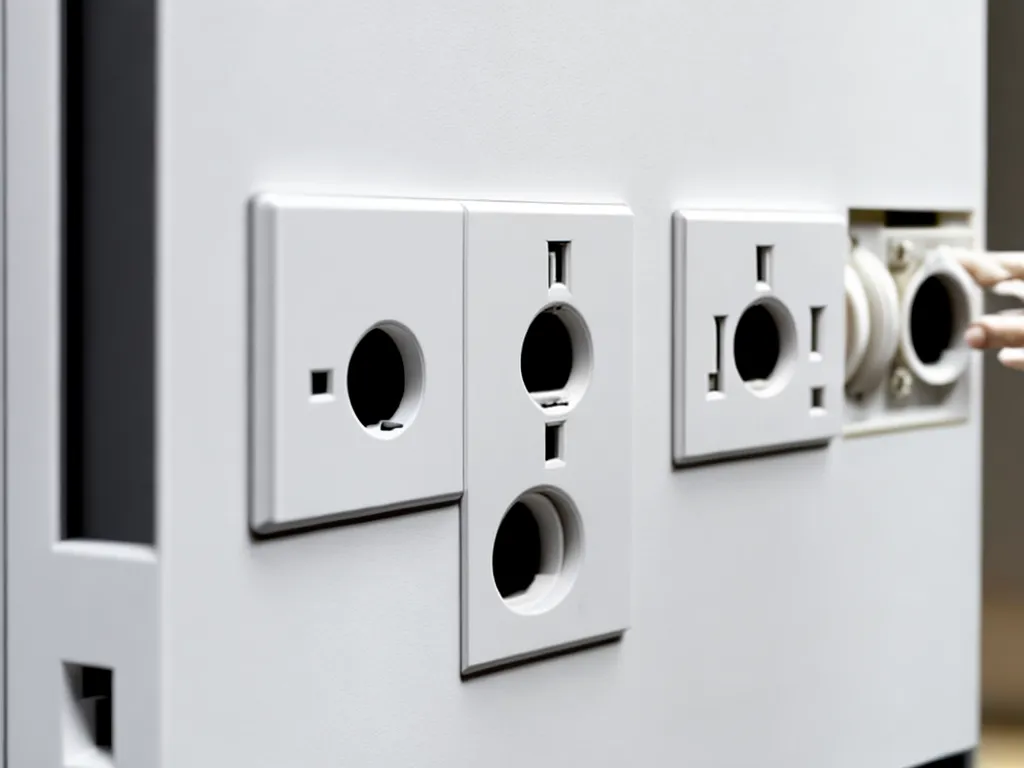 CE Marking Standards Actually Improve Electrical Socket Safety?”” />
CE Marking Standards Actually Improve Electrical Socket Safety?”” />
Electrical sockets provide us with convenient access to electricity for powering appliances, devices, and equipment. However, they also pose an electrocution and fire hazard if not properly designed and installed. This raises an important question: do CE marking standards actually improve the safety of electrical sockets?
What is CE Marking?
CE marking indicates a product’s compliance with health, safety, and environmental protection standards for products sold within the European Economic Area (EEA). The letters “CE” are an abbreviation of the French phrase “Conformité Européene” which literally means “European Conformity”.
Products bearing the CE marking can be traded freely within the EEA member states. By affixing the CE marking, manufacturers declare that their product meets the essential requirements of all relevant European product safety directives. For electrical sockets, the key directives are the Low Voltage Directive (LVD) and the Electromagnetic Compatibility (EMC) Directive.
Key Directives for Electrical Socket CE Marking
-
Low Voltage Directive (LVD) – covers electrical equipment operating within 50-1000V AC and 75-1500V DC. It aims to ensure safety and prevent hazards from electrical shock, fire, etc.
-
Electromagnetic Compatibility (EMC) Directive – covers equipment’s ability to function in its electromagnetic environment without causing disturbances. It aims to prevent interference issues.
CE marking also requires the manufacturer to carry out a conformity assessment. This usually involves testing and certification by an independent body known as a Notified Body.
How CE Marking Improves Socket Safety
CE marking indicates that the electrical sockets have met various safety requirements. Here are some of the key ways CE standards enhance socket safety:
Mandatory Safety Testing and Certification
CE marking requires extensive safety testing of the electrical sockets. This includes testing for:
- Electric shock – verifying insulation can withstand high voltage.
- Fire resistance – ability to not catch fire when overloaded.
- Overload protection – having fuses or circuit breakers.
- Fault protection – shutting power off in a fault condition.
Independent testing and certification ensures sockets meet these critical safety goals.
Strict Design and Manufacturing Standards
The LVD specifies minimum spacing between conductive elements to prevent short circuiting. CE marked sockets must use high quality insulation materials that won’t easily melt or burn. High temperature tolerance levels are also mandated.
Manufacturing quality control standards reduce the risk of production defects leading to faulty, unsafe sockets.
Mandatory Safety Information and Warnings
CE marking requires the socket to be shipped with comprehensive safety information for end users. This includes warnings, installation and use instructions. Proper labeling of voltage, current ratings, and pinouts helps minimize misuse.
Minimum IP Ratings for Moisture Ingress Protection
IP ratings indicate the socket’s protection levels against dust and moisture ingress. CE standards mandate minimum IP ratings for sockets to prevent hazards from water contact with electricity.
Ongoing Compliance Monitoring
CE marking requires the manufacturer to continuously monitor product compliance after release through testing audit samples. If any issues are found, corrective actions must be taken to maintain compliance.
Case Studies on Improved Safety
Let’s look at some real world case studies highlighting how CE marking enhanced socket safety:
Case 1: Preventing Electric Shocks
A Chinese socket manufacturer had quality issues leading to multiple field reports of users getting electric shocks. Investigating the root cause revealed insufficient spacing between internal metallic parts.
Transitioning to meet CE marking standards forced design improvements ensuring adequate internal clearance. This prevented further electric shock incidents.
Case 2: Reducing Fire Risk
A British socket factory was using poor quality plastic unable to withstand high temperatures. After CE marking mandated more rigorous flame retardant tests, the factory switched to using superior thermoplastic.
This reduced the fire risk from overloaded sockets overheating and burning. Independent testing provided ongoing validation of the fire resistance improvements.
Case 3: Safer Installation Instructions
An Irish company’s electrical sockets lacked adequate safety instructions for installation and use. Several incidents occurred from improper wiring.
After redesigning its product literature to comply with CE marking requirements, the company included clearer visual diagrams demonstrating safe wiring and grounding.
Does CE Marking Guarantee 100% Safety?
While CE marking sets a high bar for safety, it does not guarantee 100% safety under all conditions. Some limitations include:
- Human error – sockets can still be installed incorrectly despite safety instructions.
- Component failures – even certified fuses may fail unexpectedly.
- Extreme conditions – sufficiently high voltages/currents can defeat safety margins.
However, enforcing CE standards has significantly moved the needle on socket safety over the past decades. Continued vigilance in compliance ensures consumers can use sockets with confidence.
Conclusion
In summary, CE marking standards have clearly improved the baseline safety levels of electrical sockets sold and used in Europe. Mandating design criteria, manufacturing quality, safety testing, and user information has reduced the risks from electric shock, fire, moisture ingress and other hazards. Real world evidence confirms that CE marking has prevented injuries and accidents. While no system can assure perfect safety, enforcing CE conformance has enhanced protections for end users as well as installers handling electrical sockets. Continued compliance monitoring and vigilance is essential to account for emerging risks and evolving usage conditions over time. But the track record demonstrates that CE marking delivers substantial safety benefits in practice.
